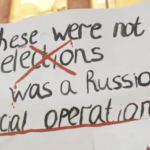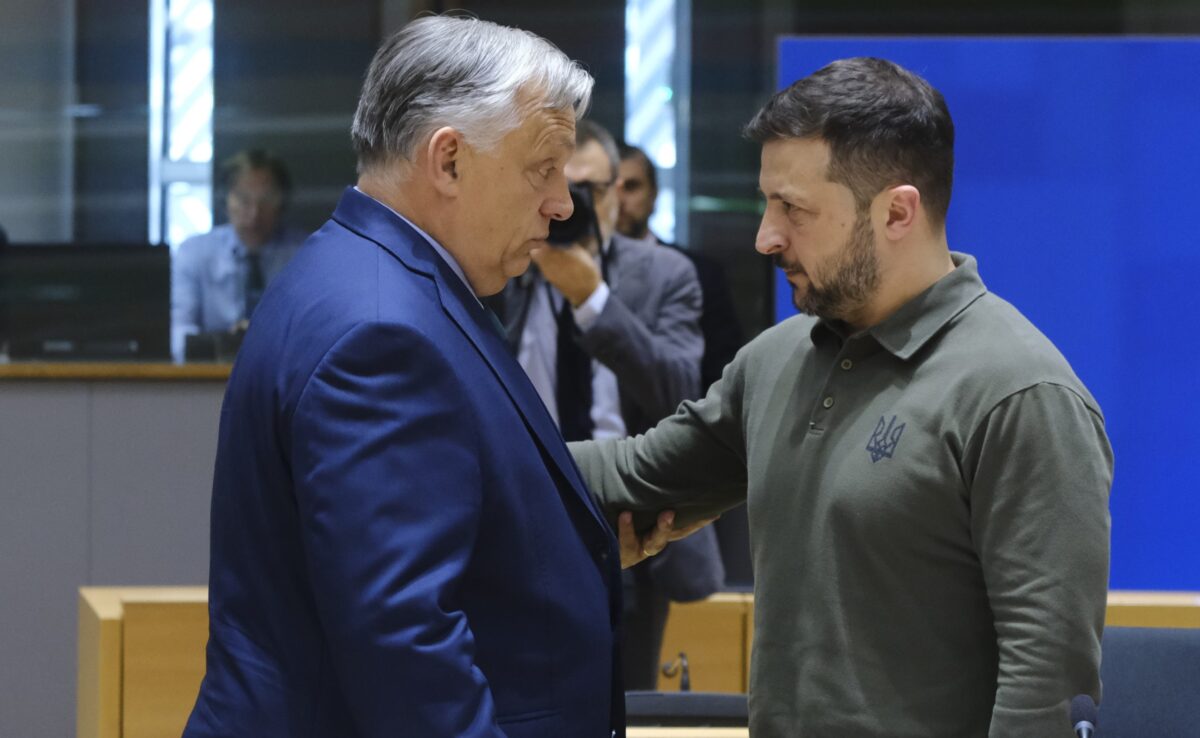Hungary’s relationship with the United States has reached a historic low since Russia’s full-scale invasion of Ukraine, and Prime Minister Viktor Orbán is unequivocally hoping for Donald Trump to win a second term.
This contrasts sharply with other countries in Central and Eastern Europe that want to ensure Washington remains a stable security provider for the region regardless of the White House’s occupant.
The stance of Hungary’s government stems from the ideological alignment of Orbán’s Fidesz party with the Republican party’s MAGA wing, based on shared illiberal values and belief in authoritarian-style leadership. This partisan approach led to limited dialogue and repeated conflicts with Democratic administrations over Hungary’s autocratisation, ties with China and Russia, and pervasive corruption.
The government has cultivated close ties with Trump as well as his running mate J.D. Vance and influential figures in the Republican Party, and also key strategists in the MAGA movement. While senior figures like Senator Mitch McConnell have voiced concerns about Hungary’s pro-China policies, they are rather isolated in the party.
‘Deep involvement’
In 2016, Orbán was the only European leader to endorse Trump, which the former president reciprocated for Hungary’s 2022 parliamentary elections.
Orbán has called Trump a “man of peace” whose reelection would end the wars in Ukraine and the Middle East, while Trump referred to Orbán as a “strong man” and a “smart prime minister” during the recent presidential debate.
After Trump’s defeat in 2020, Orbán still bet on him for the long term. Fidesz and pro-government think tanks developed ties to MAGA circles. As a result, it is in Hungary that the Conservative Political Action Conference started holding an annual European meeting in 2022, bringing together far-right and illiberal actors from both sides of the Atlantic.
The Danube Institute established formal cooperation with the Heritage Foundation, the home of the notorious Project 2025. In July, Orbán said: “We have entered the programme-writing system of President Donald Trump’s team, and we have deep involvement there”.
Erosion of democracy
This partisanship is not the only reason for the deterioration of the relationship between Hungary’s government and the Democrats. The Biden administration has criticised the erosion of democracy and the corruption caused by the Orbán regime. It has also expressed growing frustration with its friendly ties with China and Russia.
In the last couple of years, Washington has disapproved of Hungary’s delaying of Finland and Sweden’s NATO accession, its obstruction of EU aid to Ukraine, and its opposition to Russia sanctions. There has been controversies about the Budapest-based, Russia-controlled International Investment Bank (IIB), which is believed to have ties to Russian intelligence, and the controversial immigration scheme simplifying the entry of Russian and Belarusian migrant workers into Hungary.
The country has also become a key entry point for Chinese electric-vehicle and battery manufacturers into the European market.
As a result, the Biden administration has imposed sanctions on a Hungarian national linked to the IIB as well as on corporate entities associated with the Paks II nuclear power plant being built in partnership with Russia’s Rosatom and with supporting Russia’s war effort.
A vindicated Orbán may radicalise further
Trump’s election would therefore be a welcome change for Orbán. A Trump administration would ease the diplomatic pressure, giving Hungary’s government greater room to manoeuvre and influence on the European and global stage. Trump’s threat to coerce Ukraine into a peace deal by cutting off military aid would also align with Orbán’s attitude toward the country.
Orbán would feel vindicated and may radicalise further. His close ties to the US president and perception as a “Trump whisperer” would boost his standing among his illiberal allies as he positions himself as a leader of nativist, sovereigntist forces in the EU.
Trump’s victory could play into the hands of Orbán at home, too. Criticism from Washington over democratic backsliding, corruption, and ties to Russia would cease, and the threat of more sanctions would dissipate. US support for civil society in the region, including in Hungary, would most likely plummet.
All this may embolden Orbán’s government to increase pressure on its domestic critics ahead of the 2026 elections, especially as it faces a potentially dangerous new challenger in Péter Magyar’s Tisza party.
This would drive one more nail into the coffin of Hungary’s relations with the EU. Any concerns raised by the EU institutions would fall on deaf ears while Hungary would continue its vetoes and obstructionism at the EU level.
Reintegrating Hungary
Conversely, a Kamala Harris victory would be a significant setback for Orbán. Her administration could impose more and tougher sanctions related to corruption, or aimed at pressuring Orbán to reconsider Hungary’s tacit support for Russia’s war effort and alignment with China. US diplomatic pressure would continue.
Budapest’s relationship with Washington would deteriorate further in all likelihood. In the government-controlled media—constituting up to 80 per cent of the national market—the United States is frequently depicted as a global warmonger, primarily responsible for the war in Ukraine. The Biden administration is portrayed as an adversary and the US ambassador is often subjected to personal attacks.
However, a Democratic victory would also show the costs of Orbán and Fidesz’s partisan approach to the United States. This might prompt a limited reassessment and a cautious outreach to a Harris administration to reset relations. But whether this would go beyond symbolic gestures to meaningful moves, such as distancing from China and Russia is highly doubtful.
A Harris administration would be well-advised to intensify pressure on the Orbán regime, which faces declining domestic support and legitimacy. By demanding meaningful concessions for any reset sought by Orbán, it would work toward reintegrating Hungary as a reliable transatlantic security partner and enhance the prospects of a democratic transition in the country.
This article was co-authored by Zsuzsanna Végh and is part of series in which German Marshall Fund of the United States (GMF) experts from Central and Eastern Europe set out the implications of a Harris or Trump win in the US presidential election for the countries in the region.
Photo: Viktor Orbán with Ukrainian President Volodymyr Zelensky at an EU Council meeting earlier this year. © European Union.







